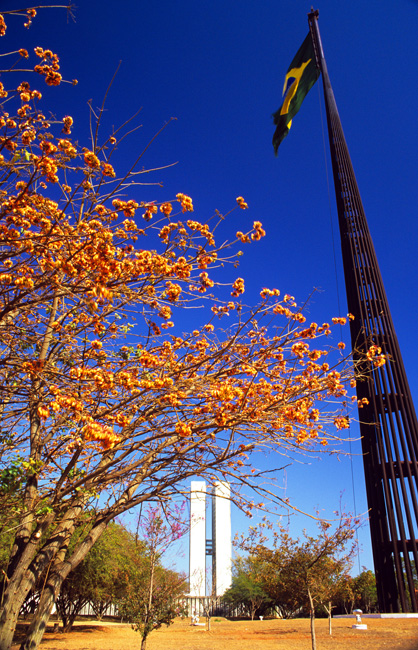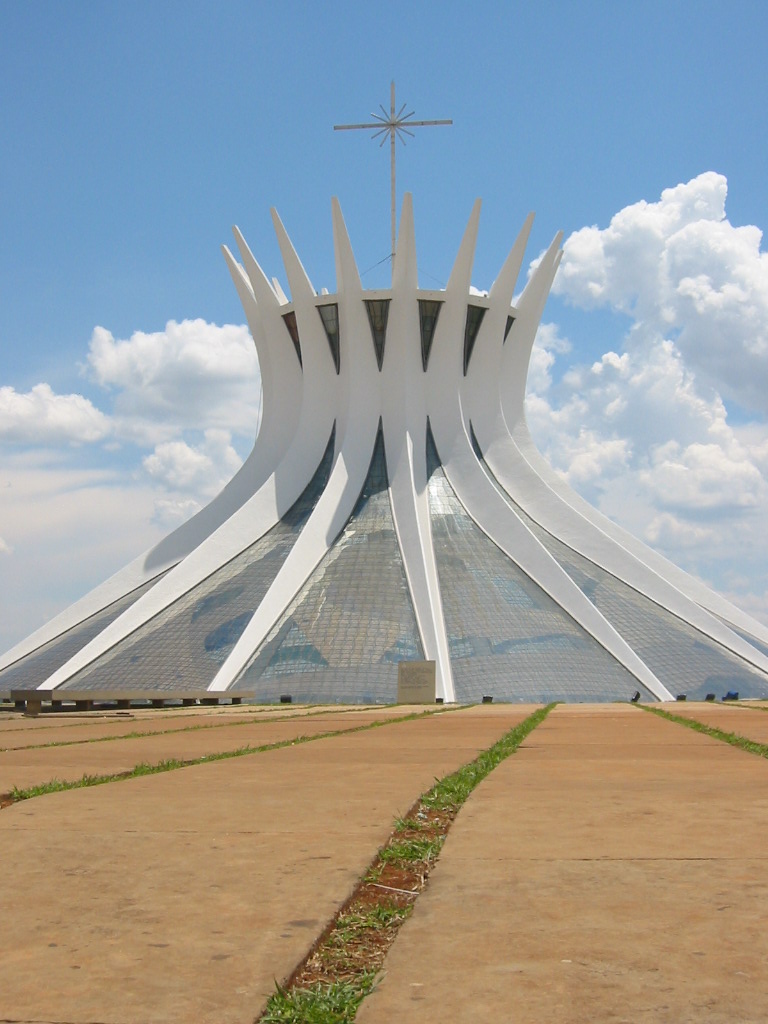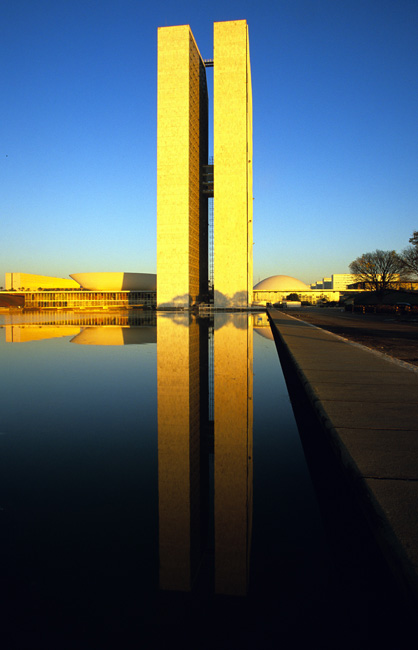Registration
The registration page for RDP and ISR is now open.
If you need further information about fees and deadlines in any of those events, please refer to the registration pages for RDP and ISR. Registration for TLCA e RTA can be reached within the registration page for RDP.
In order to register for LSFA'09 you must register as well for RDP. Early registration fee (until 10th June) for LSFA is R$ 100,00.
The Venue
All events will be held at the FINATEC Building, which is inside the University of Brasília main campus.
Click here for a bigger map.
Accommodation
The following hotels offer special discounts for RDP 2009/ LSFA participants.Aracoara |
|
| Single R$ 134,00 | |
| Double R$ 154,00 | |
| Reservation: Send an email to hotel@aracoara.com.br and inform that you are a RDP'09 participant in order to get the discount. You must add R$2,00 per night (city/tourist tax) and 10% of service and taxes to the above values. Breakfast included. | |
St Paul Plaza |
|
| Single R$ 144,00 | |
| Double R$ 168,00 | |
| Triple R$ 210,00 | |
| Reservation: Send an email to reservasstpaul@plazabrasilia.com.br and inform that you are a RDP'09 participant in order to get the discount. You must add R$2,00 per night (city/tourism tax) and 10% of service tax to the above values. Breakfast included. | |
Mercure Apt Lider |
|
| Single R$ 204,00 | |
| Double R$ 224,00 | |
| Reservation: Send an email to reservasmercurelider@accorhotels.com.br and inform that you are a RDP'09 participant in order to get the discount. You must add R$2,00 per night (city/tourist tax) and 5% of service and taxes to the above values. Breakfast included. | |
Manhattan Plaza |
|
| Single R$ 210,00 | |
| Double R$ 252,00 | |
| Triple R$ 315,00 | |
| Reservation: Send an email to reservasmanhattan@plazabrasilia.com.br and inform that you are a RDP'09 participant in order to get the discount. You must add R$2,00 per night and 10% of service and taxes to the above values. Breakfast included. | |
Transfers
Transfer from the airport to your hotel
The Juscelino Kubitschek International Airport is located about 11 kilometers from the city centre. The best way to get from the airport to the hotels is by taxi. This will cost you around R$ 40.00 and take around 20 minutes. Please have your hotel's name and address written to handle to the taxi driver.
Transfer from the hotel to the venue
The organization will provide bus transfer in front of the Aracoara/Mercury hotels and back for the RDP participants early in the morning and back at the end of the day.
In case you need to go to or come back from the venue at other times, we recommend you take a taxi. Taxis can be ordered at the reception of your hotel. The estimated cost is around R$ 15.00.
There are no public transport directly from the hotel sector to the University. You may take the "Grande Circular" bus line northbound in the W3 avenue and drop off in front of the school "Colégio Madre Carmen Salles" and take a 10 minutes walk southbound to the venue. The bus drive will take approximately 30 minutes and will cost you around R$ 2.50.
Walking from the hotel to the venue will take approximately one hour. There are no clear walking paths and directions, so this is not recommended.
About Brasília
Brasília, located in the Federal District, has been the Capital of Brazil since 21th April, 1960. There were many reasons to bring the Capital from Rio de Janeiro to an inland location. However, the most successful achievement was to promote regional and national development. Nowadays, the Federal District is the fourth major metropolitan centre in Brazil. According to the last census, the Federal District's population was around 2 million inhabitants in 2000. The Brazilian Institute of Geography and Statistics (IBGE) estimates that the population has grown to 2.5 million in 2007.
 Although the idea of a new inland capital had been presented in 1823 (just after Brazil's independence), the construction started in 1956, under the government of the President Juscelino Kubitschek. The airport and the official residence were built by this time. In 1957, Lúcio Costa won the public contest for a master plan for the new capital. In his proposal, Costa describes the city's plan as having the shape of a cross: the Monumental Axis, where the government's buildings are located, runs from East to West and intersects the Residential Axis, which runs from North to South. In order to adapt his plan to the topographical characteristics of this area, as pointed out by Costa in his proposal, the Residential Axis has actually the shape of an arch. Thus, the the final shape of the Pilot Plan resembles that of an air plane.
Although the idea of a new inland capital had been presented in 1823 (just after Brazil's independence), the construction started in 1956, under the government of the President Juscelino Kubitschek. The airport and the official residence were built by this time. In 1957, Lúcio Costa won the public contest for a master plan for the new capital. In his proposal, Costa describes the city's plan as having the shape of a cross: the Monumental Axis, where the government's buildings are located, runs from East to West and intersects the Residential Axis, which runs from North to South. In order to adapt his plan to the topographical characteristics of this area, as pointed out by Costa in his proposal, the Residential Axis has actually the shape of an arch. Thus, the the final shape of the Pilot Plan resembles that of an air plane.
The Residential Axis is arranged in super-blocks (quadras), where the apartment's buildings and individual residential areas are located. The super-blocks are numbered from 1 to 16 (from the centre to the outer part of the wings); super-blocks at East are numbered from 100, 300, and so on; the super-blocks on the West are numbered from 200, 400, and so on. Thus, the addresses are based on the location (North, South) and the distance they are from the Residential Axis. Commercial, Banking, Entertainment, and other areas are given special "sector" names.
 Brasília was planned to be -- and it is -- a garden city. Besides park's areas, Costa had planned that the Axis as well as the residential super-blocks would be surrounded by grass, bushes, and trees. In the beginning, landscaping was done with many different species of trees. Nowadays only native species are used for that purpose. You will be able see many "ipês-amarelos" as the one which decorates the LSFA'09 folder (although they usually blossom at the beginning of August).
Brasília was planned to be -- and it is -- a garden city. Besides park's areas, Costa had planned that the Axis as well as the residential super-blocks would be surrounded by grass, bushes, and trees. In the beginning, landscaping was done with many different species of trees. Nowadays only native species are used for that purpose. You will be able see many "ipês-amarelos" as the one which decorates the LSFA'09 folder (although they usually blossom at the beginning of August).
 Oscar Niemeyer was assigned by President Kubitschek to design most of the governments buildings. The Alvorada Palace (Official Residence), the Cathedral, The Planalto Palace (Executive Power), the National Congress, the Supreme Court Building, and the Itamaraty Palace (Diplomacy) are among his projects that were built between 1957 and 1958. In 1960, he designs the buildings for the University of Brasília. The Central Institute of Sciences is one of his projects. In 1962, as the University's activities began, he was assigned to head the School of Architecture. In 1965, Niemeyer and 200 other scholars resigned in protest against the dictatorial government treatment given to the universities. Sad part of our history.
Oscar Niemeyer was assigned by President Kubitschek to design most of the governments buildings. The Alvorada Palace (Official Residence), the Cathedral, The Planalto Palace (Executive Power), the National Congress, the Supreme Court Building, and the Itamaraty Palace (Diplomacy) are among his projects that were built between 1957 and 1958. In 1960, he designs the buildings for the University of Brasília. The Central Institute of Sciences is one of his projects. In 1962, as the University's activities began, he was assigned to head the School of Architecture. In 1965, Niemeyer and 200 other scholars resigned in protest against the dictatorial government treatment given to the universities. Sad part of our history.
 The federal capital was declared humanity's heritage in 1987 in order to preserve its architectural features. However, differently from other cities of Brazil's heritage, it was given the title for being a unique example of innovation, conviction and modernity.
The federal capital was declared humanity's heritage in 1987 in order to preserve its architectural features. However, differently from other cities of Brazil's heritage, it was given the title for being a unique example of innovation, conviction and modernity.
Touristic Information
International Airport: Aeroporto Internacional de Brasília - Pres. Juscelino Kubitscheck Address: Área Especial do Lago Sul, 12 km Brasília/DF Telephone: +55 (61) 3364-9224References
http://www.braziltour.com
http://www.ibge.gov.br
Lúcio Costa, Plano-piloto de Brasília, ed. Módulo - Arquitetura Ltda
http://www.niemeyer.org.br/
| Scientific Sponsorship | Sponsors |
 |